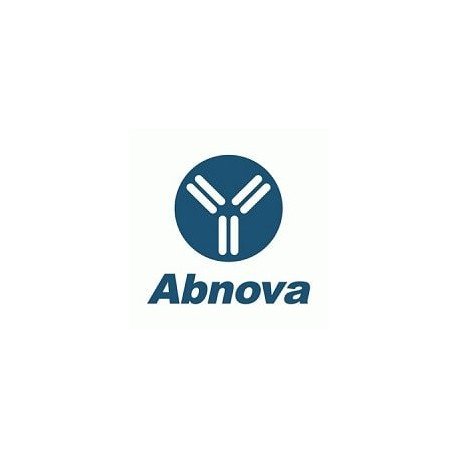Cart 0 Product Products (empty)
No products
To be determined Shipping
0,00 € Total
Prices are tax excluded
Product successfully added to your shopping cart
Quantity
Total
There are 0 items in your cart. There is 1 item in your cart.
Total products (tax excl.)
Total shipping (tax excl.) To be determined
Total (tax excl.)
Data sheet of MAP3K5 (phospho S83) polyclonal antibody
| Brand | Abnova |
| Product type | Primary antibodies |
| Reactivity | Human,Mouse |
| Host species | Rabbit |
| Applications | WB,ELISA |
More info about MAP3K5 (phospho S83) polyclonal antibody
| Brand: | Abnova |
| Reference: | PAB9947 |
| Product name: | MAP3K5 (phospho S83) polyclonal antibody |
| Product description: | Rabbit polyclonal antibody raised against synthetic phosphpeptide of MAP3K5. |
| Gene id: | 4217 |
| Gene name: | MAP3K5 |
| Gene alias: | ASK1|MAPKKK5|MEKK5 |
| Gene description: | mitogen-activated protein kinase kinase kinase 5 |
| Immunogen: | Synthetic phosphopeptide (conjugated with KLH) corresponding to residues surrounding S83 of human MAP3K5. |
| Form: | Liquid |
| Recommend dilutions: | ELISA (1:5000-1:10000) Western Blot (1:1000) The optimal working dilution should be determined by the end user. |
| Storage buffer: | In 20 mM KH2PO4, 150 mM NaCl, pH 7.2 (0.01% sodium azide) |
| Storage instruction: | Store at 4°C. For long term storage store at -20°C. Aliquot to avoid repeated freezing and thawing. |
| Quality control testing: | Antibody Reactive Against Synthetic Peptide. |
| Note: | This product contains sodium azide: a POISONOUS AND HAZARDOUS SUBSTANCE which should be handled by trained staff only. |
| Product type: | Primary antibodies |
| Host species: | Rabbit |
| Antigen species / target species: | Human |
| Specificity: | This phospho specific polyclonal antibody reacts human pS83 ASK1. |
| Reactivity: | Human,Mouse |
| Application image: |  |
| Application image note: | ELISA results of MAP3K5 (phospho S83) polyclonal antibody (Cat # PAB9947) tested against BSA conjugates of non-phospho and phospho forms of immunizing peptide. Each well was coated with 0.1 mg of conjugate. The starting dilution of antibody was 1 : 1,000 and each point on the X-axis represents a 2-fold dilution. HRP conjugated Goat-anti-Rabbit IgG H&L and TMB substrate were used for detection. |
| Applications: | WB,ELISA |
| Shipping condition: | Dry Ice |
| Publications: | The cell cycle-regulatory CDC25A phosphatase inhibits apoptosis signal-regulating kinase 1.Zou X, Tsutsui T, Ray D, Blomquist JF, Ichijo H, Ucker DS, Kiyokawa H. Mol Cell Biol. 2001 Jul;21(14):4818-28. |


